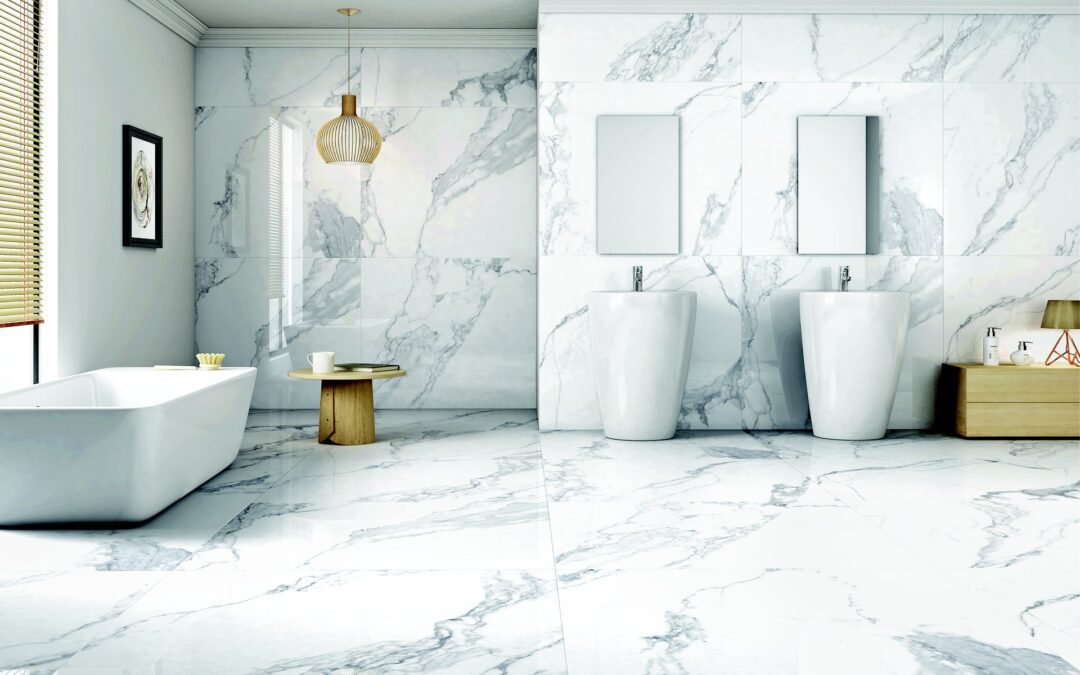Deciding on the type of tile to use for your home renovation project can be a daunting task, especially when faced with the choice of porcelain vs. ceramic tile. Porcelain and ceramic tiles are both popular options for flooring and walls in homes, but there are some differences between the two that you need to consider before making a decision. In this article, we’ll take a look at the advantages and disadvantages of each material, how they are made and the cost of tile to help you make an informed decision.
Porcelain Tile
Porcelain tile is a type of ceramic tile that is made from a fine mixture of clays and minerals fired at high temperatures. One of the biggest advantages of porcelain tile is its durability. It is highly resistant to scratches, stains, chips, and other forms of wear and tear, making it a popular choice for high-traffic areas in the home. Porcelain tile is also water-resistant, which makes it ideal for use in areas with high humidity and moisture, like bathrooms and kitchens.
Another advantage of porcelain tile is its design versatility. It comes in a wide range of styles, colors, and finishes, making it easy to find a tile that matches your aesthetic preferences and decorating style. Moreover, porcelain tile can mimic the look of other materials, such as natural stone or wood, without requiring the maintenance that comes with those materials.
On the downside, the cost of porcelain tile can be higher than ceramic tile. It’s also harder and more difficult to cut, which can make installation more time-consuming and costly. Porcelain tile is also heavier than ceramic tile, which can make it more challenging to install on walls.
Ceramic Tile
Ceramic tile is also made from a mixture of clays and minerals, but it’s fired at a lower temperature than porcelain tile. One of the main advantages of ceramic tile is its affordability. It’s typically less expensive than porcelain tile, making it more accessible for homeowners on a budget. Ceramic tile is also relatively easy to cut, which makes installation faster and more affordable.
Ceramic tile also comes in a wide range of styles, colors, and patterns, making it perfect for achieving different design aesthetics. It’s also relatively lightweight, which makes it an ideal choice for wall installations.
On the downside, ceramic tile is generally less durable than porcelain tile. It’s more vulnerable to scratches, chips, and stains than porcelain tile. Ceramic tile is also porous, which means it requires more maintenance than porcelain tile. It’s important to note that some ceramic tiles require sealing to make them more stain-resistant and durable.
Moreover, ceramic tile is not recommended for use in wet areas, as it’s not water-resistant. This makes it a poor choice for bathrooms and kitchens, where moisture is an issue.
Conclusion
In conclusion, choosing between porcelain vs. ceramic tile comes down to your specific needs and preferences. Porcelain tile is more durable, water-resistant, and design-flexible, but it’s also more expensive and harder to install. Ceramic tile, on the other hand, is more affordable, easier to cut, and design-flexible but less durable and not water-resistant.
When considering cost of tile, it’s important to keep in mind that while porcelain tile may be more expensive upfront, it may save you money in the long run due to its durability and low maintenance. Ultimately, both porcelain and ceramic tiles have their advantages and disadvantages, and the decision boils down to what best meets your specific needs and budget.
So, are you ready to upgrade your outdated bathroom? We would be delighted to assist! In Metro Atlanta, GA and the surrounding area, we have a team of skilled installers ready to assist you. Affordable Bathrooms has been assisting homeowners for over twenty years, and we have completed thousands of projects, including numerous types of bathroom remodels. Please contact us as soon as possible if you require assistance.
Image Credit: Pixabay

